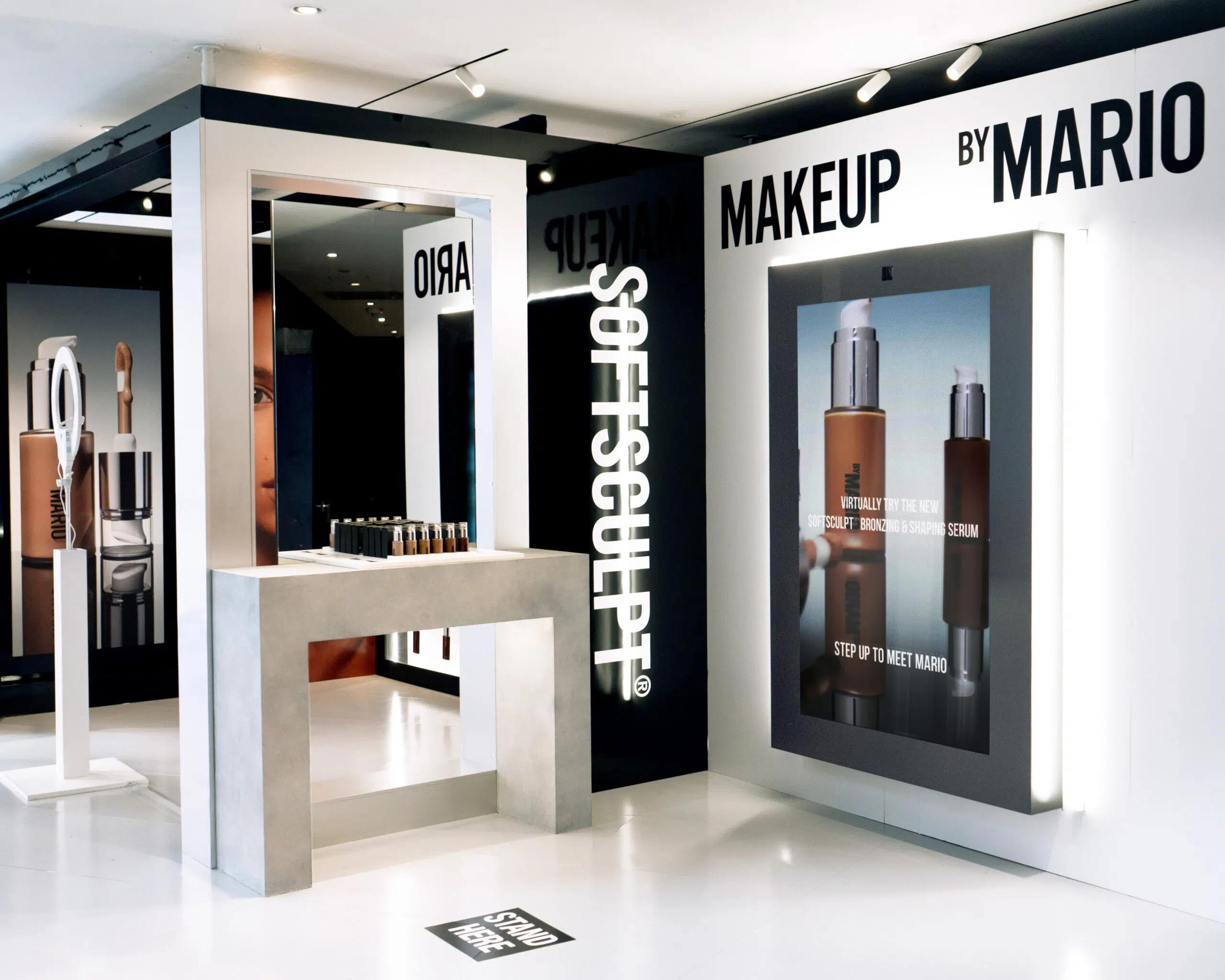In today’s retail landscape, the intersection of artificial intelligence and augmented reality is revolutionizing how consumers interact with brands. AR and AI mirrors represent a cutting-edge technology that transforms traditional retail spaces into interactive, personalized experiences. These smart screens come in various forms – from photo booths to storefronts and city installations – all sharing one core feature: they provide unique, personalized visual experiences that respond directly to the consumer.
This comprehensive guide explores how these innovative mirrors work, their benefits for both businesses and consumers, and their potential to reshape the future of retail and public spaces.
What is an AR mirror?
AR mirror is a smart screens that allow consumers to have immersive experiences in offline retail, including virtual try-ons and creative photo transformations.
These mirrors come in various formats, such as photo booths, storefronts, or city pop-up installations. While this broad category includes many different formats and creative experiences, they all share one main feature: the digital screen reacts to the consumer and offers a unique, personalized visual experience.
How does AI powered AR mirror work?
A typical AR or AI mirror (smart screen) consists of three crucial parts. The first is a camera that captures real-time video of the user. This camera sends the video content to a computer for visual processing and analysis. After processing, the visual result is displayed on the smart screen.
Inside the computer, there can be multiple engines—either standalone or combined. These engines, powered by AR or AI technology, enable different visual results.
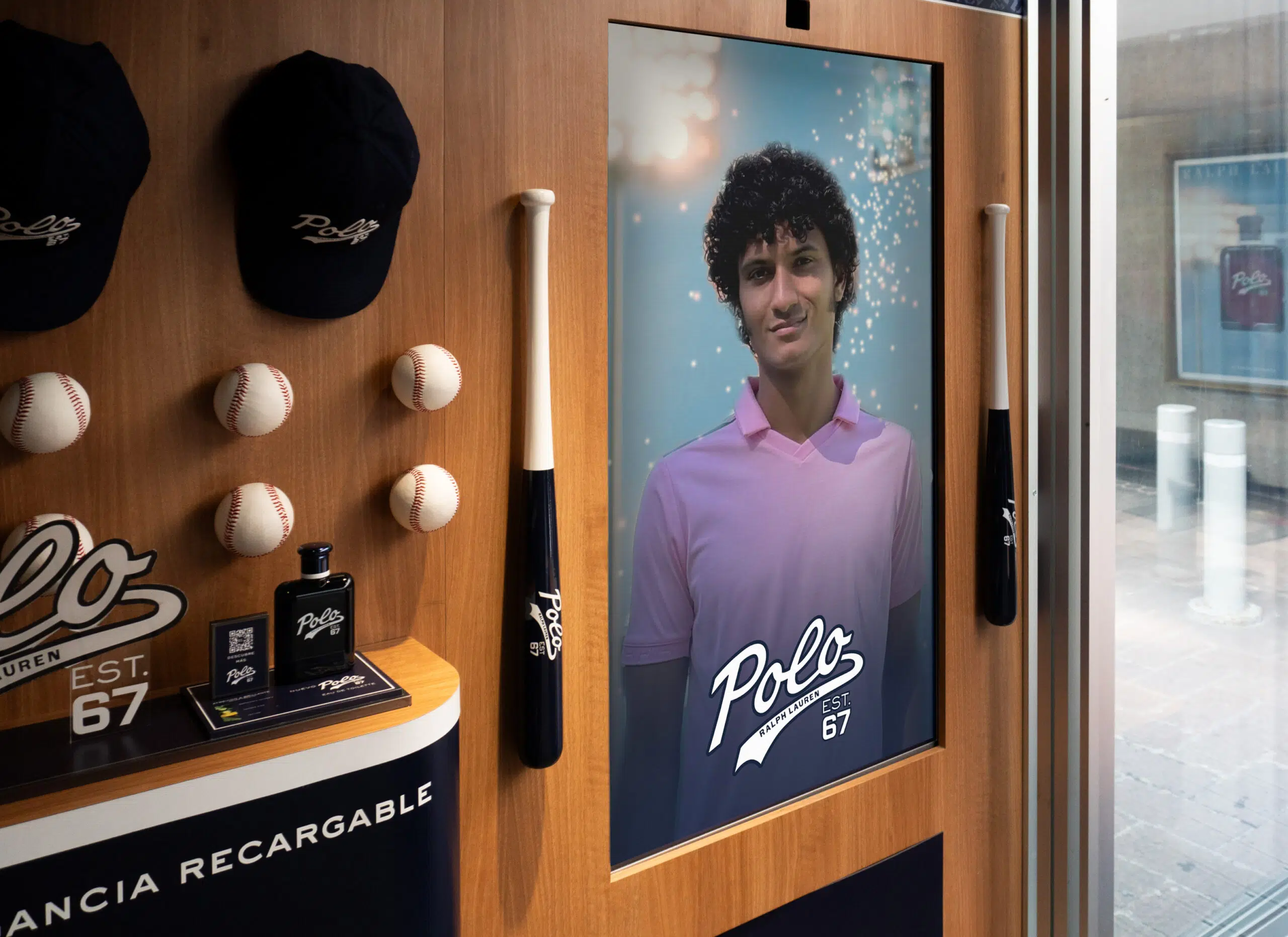
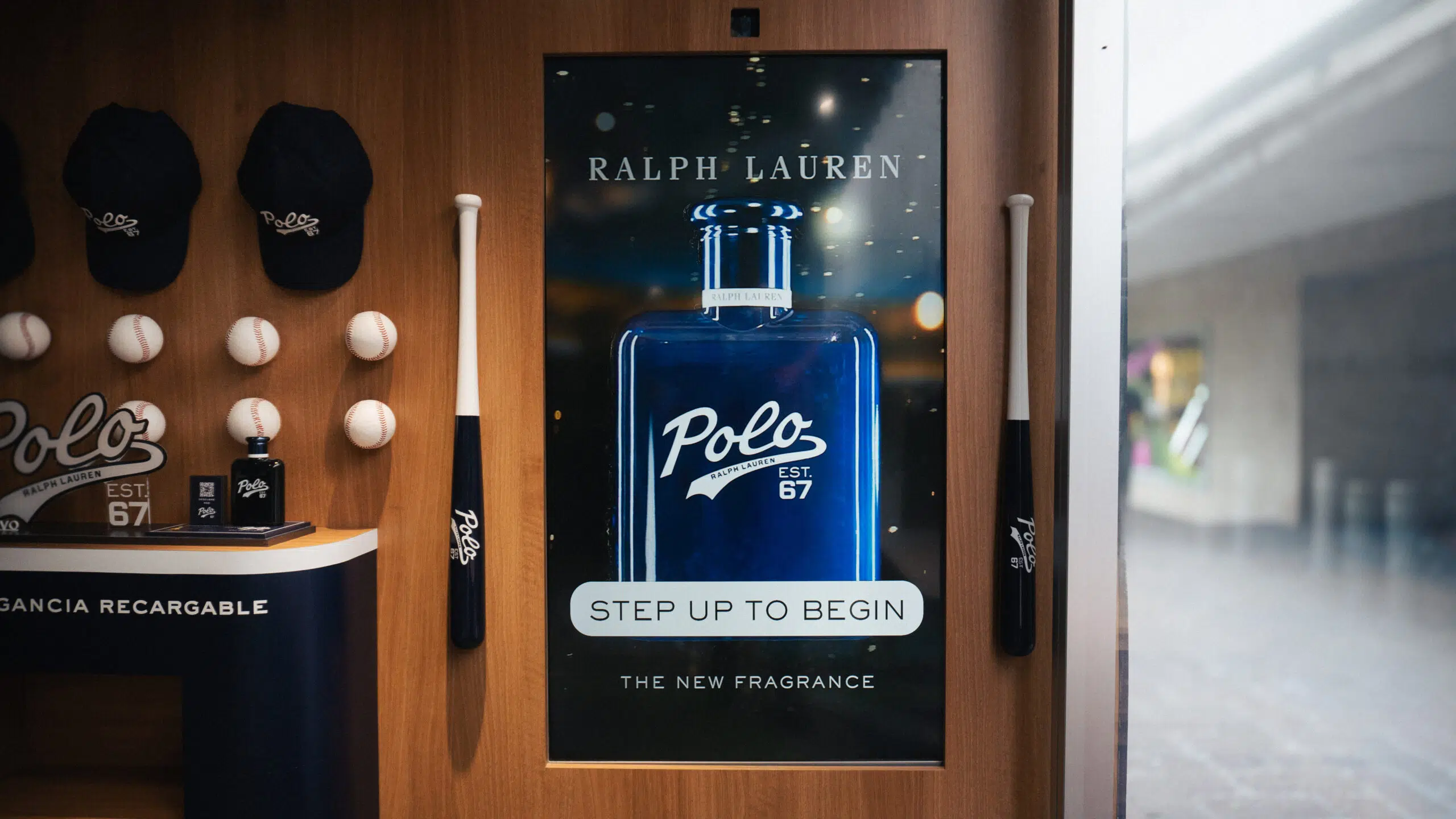
Discover the AR Mirror experience we created for Polo Ralph Lauren, blending style, technology, and interactive retail storytelling
How do AR mirrors benefit consumers?
Traditional advertising has lost its impact as consumers have become increasingly selective about the content they engage with. Modern audiences are particularly resistant to passive, non-interactive messaging, especially in physical spaces where static displays create an unwelcoming atmosphere of commercial saturation.
"Banner blindness" is a well-known phenomenon on the internet, and a similar effect occurs in offline life. People have grown weary of one-way communication where they merely consume content pushed at them. This relates to what's known as "visual pollution."
Visual pollution describes cities oversaturated with static advertising billboards and similar formats. Today’s consumers aren’t interested in passively consuming information—they want unique, personalized experiences that deliver positive emotions and cater to their specific needs. Smart screens offer two key benefits: first, they create personalized experiences where the user becomes the main focus, and second, through camera analytics, they can analyze the observer.
This analysis enables custom experiences and content targeted specifically to the type of audience the user represents. As a result, smart screens achieve a higher level of immersion and relevance, making them more valuable to users.
How do smart mirrors benefit businesses?
First, they are still considered novel technology that effectively catches attention. This makes them excellent tools for attracting people across various brand activation zones and business locations, including stores, travel retail, city events, pop-up installations, and outdoor advertising. When people notice that a screen reacts to them, they become more engaged. If the experience is emotionally positive and the content is relevant, users are more likely to further engage with the brand by visiting retail stores, trying products, and making purchases. In essence, smart screens serve as an effective top-of-funnel marketing tool. This isn’t just theory—we have data to prove it. During a recent week-long activation for Bershka, we achieved tens of thousands of user engagements with our smart screen. For one major beauty brand (which we cannot name), we increased store visits by 20%—a dramatic growth in both store traffic and sales.
The second business value is more subtle. Our smart screens collect anonymized user data about audience demographics, including age, gender, skin tone, hair color, hairstyle, face shape, clothing type, and other parameters—with the ability to add more metrics as needed. This data helps brands understand their audience at each specific sales location, enabling them to launch micro-targeted campaigns for individual stores.
Consider two stores in New York: one in downtown Brooklyn and another in Times Square. While both are in the same city, the demographic makeup varies significantly between neighborhoods. This means stores in different areas should tailor their communication materials and advertising differently. They might even need different product lines targeted to distinct consumer types. Through the big data we collect, brands can optimize each store location's communication strategy and product offerings, while also launching geo-specific marketing campaigns to boost overall performance.
The third benefit is big data collection. The third advantage is the ability to conduct user research. By offering different products within the experience, brands can understand which items attract more attention. Additionally, through emotion analysis, we can determine what emotional responses specific products evoke.
What are the main types of AI mirrors and main use cases?
A smart screen is a technology that enables the creation of immersive digital displays. While digital screens are used in many different ways, the same versatility applies to smart screens. Let me outline some specific types, starting with AI mirrors.
AI/AR mirror
An AI mirror is a smart screen that reflects the user and applies AI-generated effects. These AI-generated visual transformations can reimagine users in different styles, apply virtual overlays like clothing, or combine both effects. The main distinctive feature is that it leverages popular AI APIs for generative AI applications.
AI mirrors are one of the most universal products because they offer a simple way to interact – users just approach the mirror and see their transformed reflection. Since the focus is on creative transformation, this technology can be applied across practically all industries. For example, in banking, the mirror can reimagine someone as wealthy; in automotive, it can immerse users in various driving scenarios; for beauty products, it can apply AI makeup; and for fashion brands, it can virtually overlay clothing. The format is also versatile – we can use different screen sizes to integrate this experience across all types of offline locations, from travel retail and events to store activations in retail spaces of any size.
AI or AR photobooth
An AR photobooth is essentially an AR mirror with added functionality that prints the user’s photo with applied AI overlays or transformations. This is one of our most efficient formats—in our cases from last year, we achieved an engagement rate of one user per minute. These activations create crowds and effectively attract attention in competitive brand spaces, especially at major events and shopping mall pop-ups. The product is particularly effective for seasonal activations or product launches where you need to communicate specific, relevant messages to users.
An interesting advantage we’ve noticed is that after receiving their printed photos, users immediately take out their phones to capture digital versions. This naturally boosts brand awareness on social media through user-shared branded content.
To sum up, this activation offers three main benefits for brands:
It attracts attention, boosts online awareness, and creates emotional connections with consumers. Since users keep their photos as mementos, the brand becomes integrated into their personal environment.
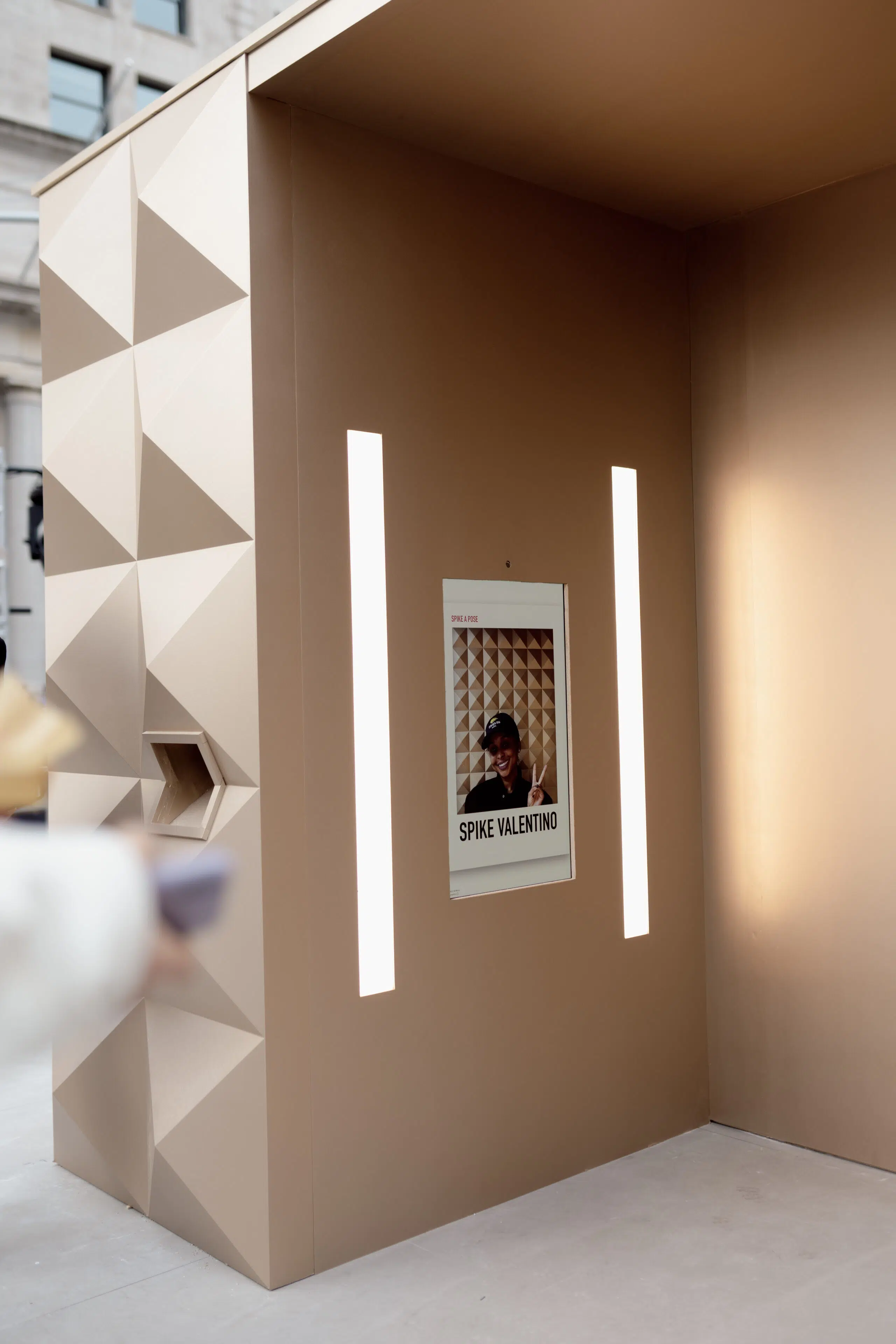

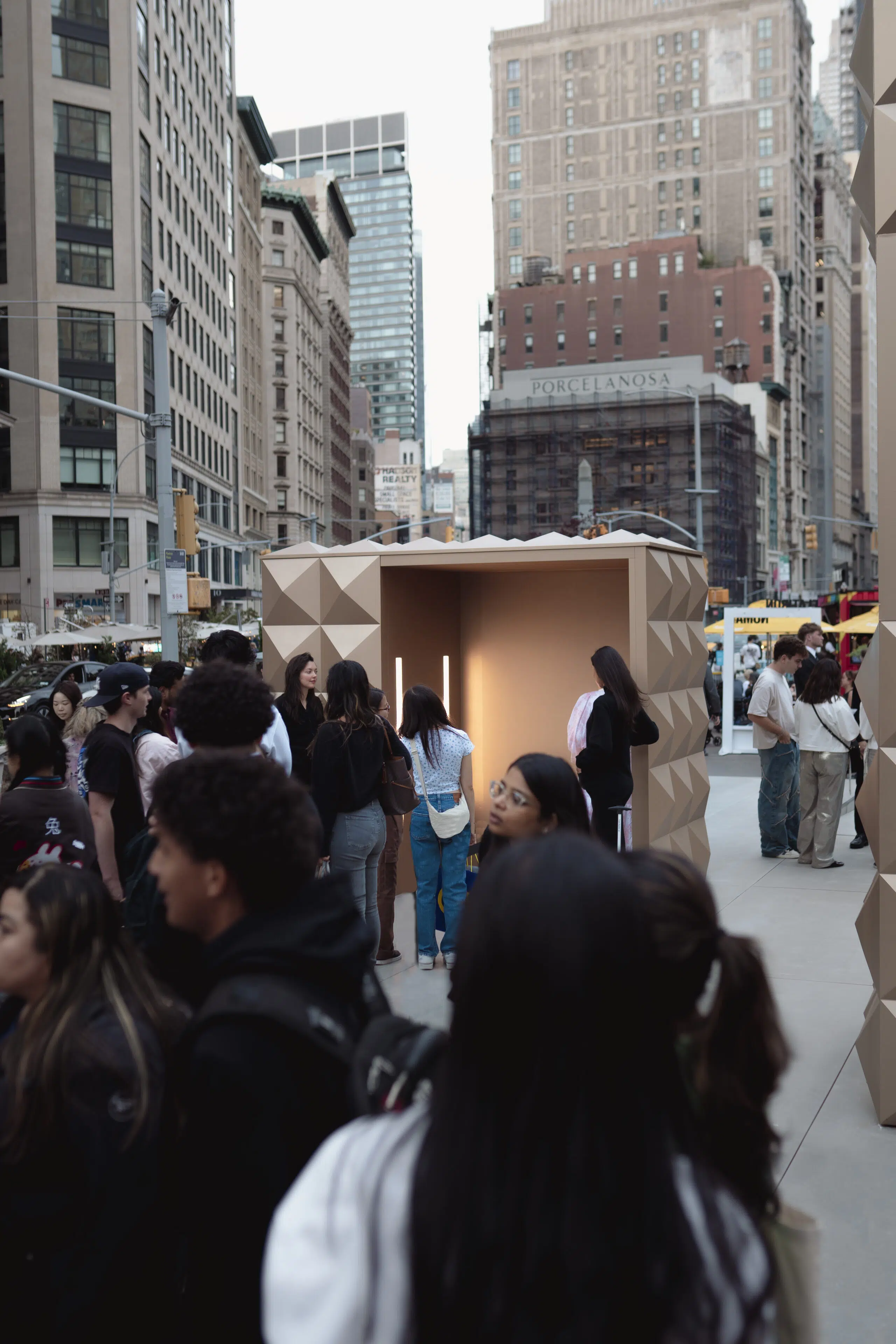
Discover the AR Photobooth experience we created for
Valentino’s Flatiron Plaza Pop-up
AI/AR showcase
An AR showcase or AR storefront is a format designed specifically for promoting specific sales points.
It consists of a smart screen integrated into a storefront, with the main function of catching the attention of people passing by and converting them into customers. The creative content displayed on these screens doesn’t need to be purely functional or product-focused. It can be any eye-catching visual—from creative transformations to augmented reality experiences—that makes pedestrians stop and consider entering the store. When brands create engaging digital experiences like this, it suggests they might have an interesting product offering worth exploring.
For this type of product, we’ve already seen solid performance with our clients. I believe this format will become one of the most popular in the future, since most brands have storefronts as part of their basic infrastructure. When storefronts can more effectively drive foot traffic into stores, implementing this technology becomes an obvious choice.
AR/AI billboard
The AR billboard is another fascinating format. Rather than creating new installations, it focuses on transforming the existing network of digital advertising screens used globally now.
Currently, there are millions of such screens around the world.
The concept is simple: by integrating a camera connected to the computer that manages screen content, we can recognize the profile or audience type of passersby and show them relevant advertising content. I'm enthusiastic about this product because it's been predicted in popular sci-fi movies like Minority Report and Blade Runner. It makes perfect sense—instead of showing the same product to everyone who passes the billboard, we can offer personalized content, leading to better engagement and higher conversion rates.
Which industries can benefit from smart mirrors and screens, and how?
All brands that actively promote themselves offline, regardless of industry, can benefit from this activation. These solutions work for brands offering both physical and digital products. For example, AR photo booths create emotional experiences that can forge long-term connections with brands.
Smart screens have applications beyond commercial use. They can serve social and infrastructural purposes. For instance, in public spaces, a smart screen could function as an interactive navigation tool, answering questions in real-time like “How do I get there?”
The screen can recognize users and, through a virtual assistant, provide specific directions while visualizing the route to their destination. This is just one example. Similarly, nonprofits can use these immersive formats to promote their messages, share their mission, and educate people about important issues—achieving much higher engagement than traditional static communication.
How easy is it to integrate AR/AI mirror innovation?
Two years ago, the technology wasn’t developed enough. There were no out-of-the-box solutions, and any integration required extensive research and manual work that could take up to several months.
Now, with our developed software, AI mirror integration can happen in just one day. All you need is a set of equipment, installed application, and designed immersive content.
Typically, we use equipment that is available globally.
Shipping is very fast, and in many cases, brands or clients already have the equipment we need—just a TV camera and a PC. We provide the software immediately. Content development can take one to three weeks, depending on complexity. If content is already available, integration takes just one day. The best part is that after hundreds of test cases, we’ve created a detailed, step-by-step user manual that allows anyone—regardless of technical expertise—to set up this experience independently. This means smart screen integration can be launched simultaneously across hundreds of locations and executed by local teams of any skill level.
Does this product works well for advertising only?
Smart screens represent more than just an advertising tool – they signal a fundamental shift in offline communication. This shift reflects a deeper transformation in how we interact with digital environments. We’re witnessing a metaphysical and socio-technological change where people no longer accept being passive targets of aggressive communication. The traditional approach to messaging, developed in the early 20th century, relied on repetitive exposure to influence behavior. This era saw numerous studies on public relations and social manipulation through messaging. These approaches viewed the average person simply as a target for information campaigns.
We believe times have changed, though communication will continue to serve as both a commercial and social instrument. We must use it more respectfully, elegantly, and thoughtfully. By offering experiences and messages that are truly relevant and valuable to consumers, we can transition from one-way communication to mutually beneficial interactions. The core concept isn’t about more effective advertising or specific technologies. Rather, it’s about creating meaningful dialogue between users and the digital environment—one that benefits all participants.
The applications extend far beyond advertising to include any scenario requiring two-way communication between users and interfaces, such as consulting services and entertainment purchases.
Consider how people can purchase directly through smart screens—this could revolutionize retail spaces. Imagine a Walmart where customers view product samples but order through touchscreens instead of handling physical inventory. This hybrid physical-digital approach could significantly reduce required store space while maintaining the shopping experience. This is just one example, but it illustrates how these use cases are virtually limitless.
What about data collection and privacy?
We collect anonymized data, meaning we never record or store any user content. The data is analyzed in real time and the parameters we collect cannot identify specific individuals. It’s a win-win situation: the parameters are generic enough to maintain anonymity, while still providing valuable information to businesses about the consumer personas they interact with. This approach ensures we meet all ethical and legal privacy standards.
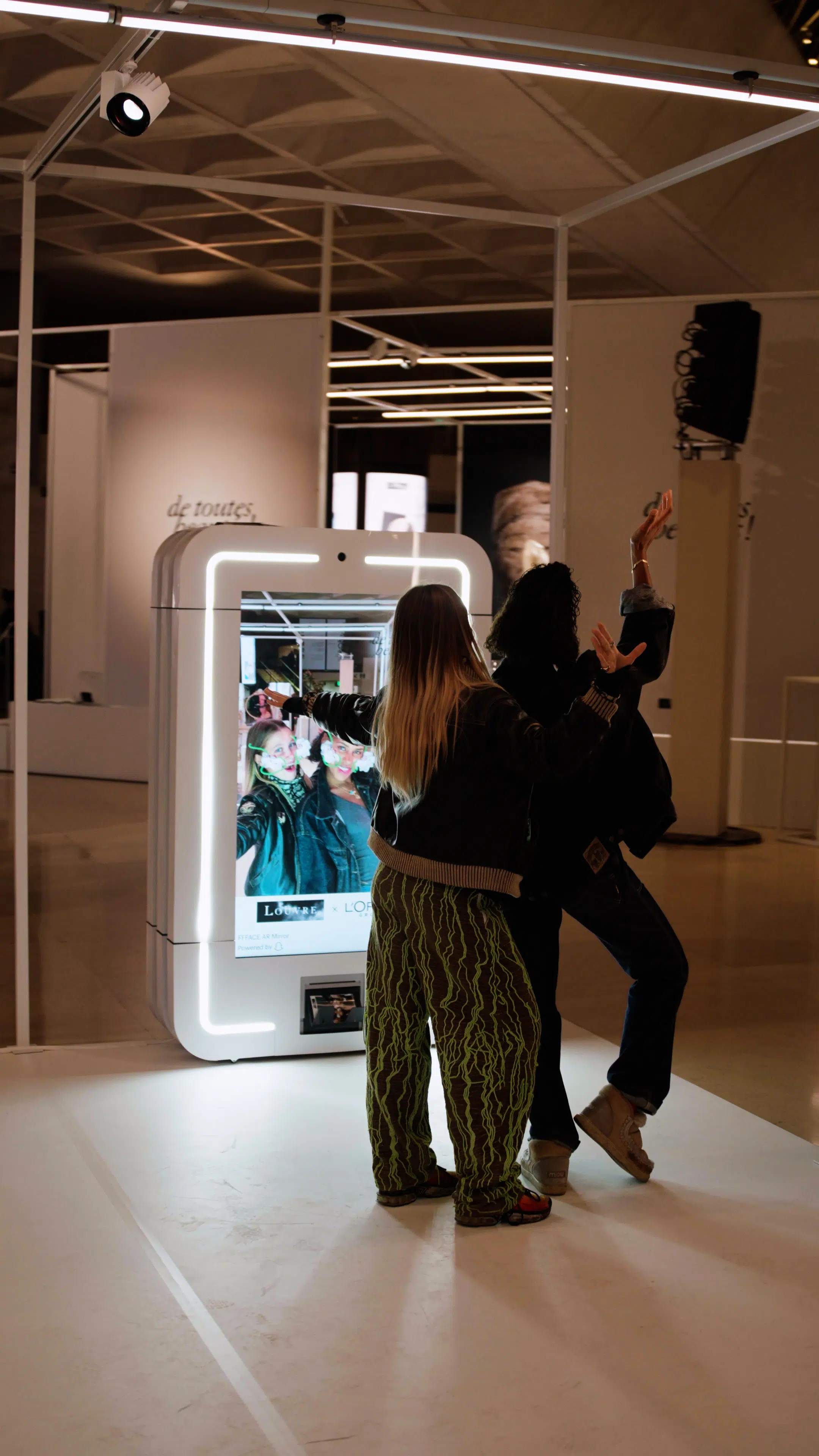
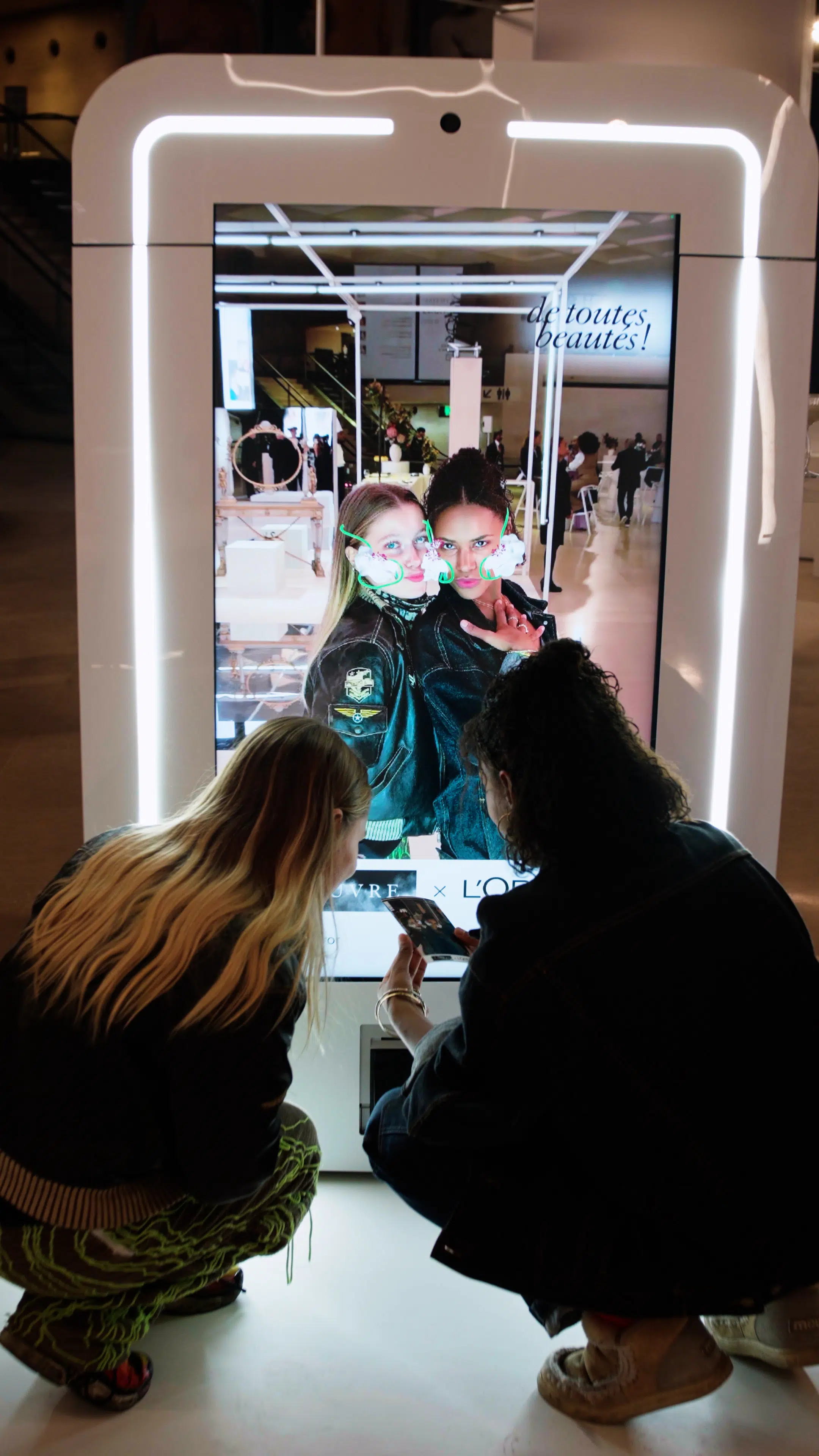
Are AI/AR mirrors sustainable?
It’s easy to calculate the resources consumed by traditional advertising materials – the plastic, paper, cardboard, and workforce needed daily to update old-fashioned displays. Substantial money is spent producing physical storefronts and in-store materials that are simply discarded after use.
By replacing these traditional formats with smart screens that offer unlimited content updates, we can save significant human and material resources while reducing waste.
What makes loook.ai so special?
Our mission makes us special because we’re not just creating specific gadgets or product formats. We’re focused on developing a solution that will transform how people interact with outdoor spaces. From the very beginning, we’ve aimed to make this solution both easy to integrate and scalable. That’s why I believe we will accomplish our mission and bring significant value to people and businesses worldwide.
Explore our latest posts:
- Retailtainment: What It Means for Modern Retail (With Examples)
- AI-Driven OOH: Turning Physical Screens Into Intelligent Media Channels
- Interactive Out-of-Home Advertising: The Future of Public Brand Engagement
- The Business Impact of Immersive Shopping Experiences
- Customer Analytics in Retail Industry: How to Collect Insights and Drive Sales

